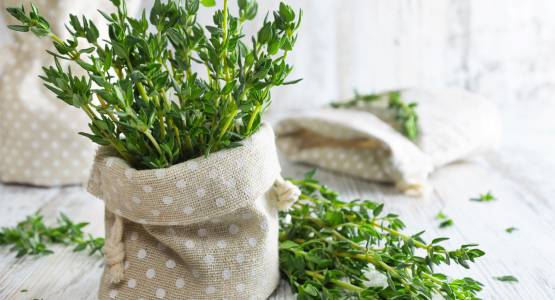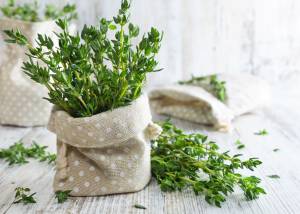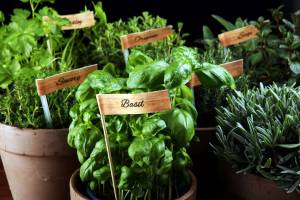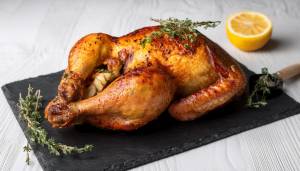A Guide to Growing Thyme in a Greenhouse

Thyme is a versatile, aromatic herb that can transform dishes with its rich, earthy flavour. For UK gardeners, growing thyme in a greenhouse offers several benefits, including protection from harsh weather, improved growing conditions, and the ability to extend the growing season. In our guide to Growing Thyme in a Greenhouse, we will walk you through everything you need to know about cultivating thyme in a greenhouse, from choosing the right varieties to care tips, harvesting, and using your home-grown thyme in delicious recipes. We’ll also explore the advantages of greenhouse gardening, especially for herbs like thyme, and discuss how growing your own herbs reduces food miles while delivering fresher, more flavourful produce.
Why Grow Thyme in a Greenhouse?
While thyme is a hardy herb that can grow outdoors, it thrives even better in a greenhouse. The controlled environment of a greenhouse allows for optimal growing conditions, which is particularly helpful in a climate like the Britain, where cold, wet winters and inconsistent summers can impact growth. Here are some key benefits of growing thyme in a greenhouse:
- Extended Growing Season: Thyme is a perennial herb, but a greenhouse can help extend its growing season by providing warmth and protection from frost.

- Pest Control: A greenhouse environment can offer a level of protection against common pests, making it easier to manage infestations organically.
- Consistent Growing Conditions: The controlled humidity, temperature, and light levels in a greenhouse create ideal conditions for thyme to flourish.
Choosing the Right Varieties of Thyme
There are many different varieties of thyme, each with its own unique flavour profile and growth habits. When growing thyme in a greenhouse, it’s essential to choose varieties that suit your culinary needs and thrive in a greenhouse environment.
- Common Thyme (Thymus vulgaris)
- Flavour: Classic, earthy, and slightly peppery.
- Best For: All-purpose cooking, especially in soups, stews, and roasted meats.
- Growing Tips: Common thyme is one of the most robust varieties and thrives in a greenhouse. It prefers full sunlight and well-drained soil.
- Lemon Thyme (Thymus x citriodorus)
- Flavour: Strong citrus aroma with a zesty lemon flavour.
- Best For: Seafood dishes, poultry, salads, and marinades.
- Growing Tips: Lemon thyme grows well in a greenhouse, and its unique flavour makes it a popular choice for cooks. Ensure plenty of sunlight to bring out the best flavour.
- Creeping Thyme (Thymus serpyllum)
- Flavour: Milder than common thyme but still aromatic.
- Best For: Ground cover, decorative uses, and milder culinary dishes.
- Growing Tips: Creeping thyme is excellent for adding a decorative element to your greenhouse. It’s also edible, though its flavour is less intense.
- Caraway Thyme (Thymus herba-barona)
- Flavour: Caraway seed-like aroma with a slight sweetness.
- Best For: Bread making, marinades, and meat dishes.
- Growing Tips: This variety can be a little more delicate, so a greenhouse environment can offer the extra protection it needs. Make sure it gets plenty of sunlight.
- Silver Thyme (Thymus vulgaris ‘Argenteus’)
- Flavour: Similar to common thyme but with a slightly sharper, more pronounced flavour.
- Best For: Garnishing dishes and adding a more decorative touch.
- Growing Tips: Silver thyme is not only a great culinary herb but also an attractive addition to your greenhouse due to its silver-edged leaves.
How to Care for Thyme in a Greenhouse
Once you’ve chosen your thyme varieties, it’s time to focus on the care needed to grow healthy, flavourful thyme plants in your greenhouse. Thyme is relatively low maintenance, but it still requires specific conditions to thrive.
- Light Requirements
Thyme thrives in full sunlight, and a greenhouse allows you to maximise this. Position thyme pots or beds in the sunniest part of your greenhouse to ensure they receive at least 6-8 hours of direct sunlight daily. If natural sunlight is limited during winter months, consider supplementing with grow lights to maintain healthy growth.
- Soil and Potting Mix
Thyme prefers well-draining soil with a neutral to slightly alkaline pH (around 6.5 to 7.5). A good mix of garden soil, sand, and perlite works well in containers or raised beds within the greenhouse. Avoid heavy, clay-based soils that can retain too much moisture, leading to root rot.
For container growing, use pots with good drainage holes to prevent waterlogging. Adding a layer of gravel or pebbles at the bottom of the pots can further improve drainage.
- Watering
Thyme is drought-tolerant and prefers dry soil conditions, so be careful not to overwater. Water only when the top inch of soil feels dry to the touch. In a greenhouse, humidity levels can sometimes get too high for thyme, so ensure there’s adequate ventilation to prevent excessive moisture build-up, which can lead to fungal diseases.
- Temperature and Humidity
Thyme can tolerate a wide range of temperatures but prefers a mild climate. In the UK, maintaining a temperature of around 16-21°C (60-70°F) in the greenhouse is ideal. During winter, if temperatures drop significantly, consider using a small greenhouse heater to keep the plants thriving.
Ventilation is also important to prevent fungal infections. Open vents or use fans to ensure good airflow around the plants, especially during warmer months.
- Feeding and Fertilising
Thyme is not a heavy feeder, but it does benefit from occasional feeding to encourage healthy growth. Apply a balanced organic fertiliser once a month during the growing season (spring and summer). Avoid over-fertilising, as this can lead to excessive leaf growth at the expense of flavour concentration.
- Pruning
Regular pruning helps keep thyme plants bushy and productive. Trim back the stems after the flowering season to encourage new growth. Avoid cutting back too much of the woody part of the stem, as thyme doesn’t regenerate well from old wood.

- Companion Planting
Thyme is a great companion plant for other herbs like rosemary, sage, and oregano. It can also deter certain pests, making it a useful addition to your greenhouse herb garden.
Common Pests and Diseases
While thyme is relatively hardy, growing it in a greenhouse can attract a few pests and diseases. Here’s what to watch out for and how to manage them:
- Aphids
- Problem: Aphids can cluster on the new growth of thyme plants, sucking sap and weakening the plant.
- Solution: Use a gentle soap spray or introduce natural predators like ladybirds to keep aphid populations in check.
- Spider Mites
- Problem: Spider mites can cause thyme leaves to yellow and die off, especially in a dry, hot greenhouse.
- Solution: Increase humidity around the plant by misting the air, and wash off the mites with a strong stream of water. Neem oil is also effective in controlling spider mites.
- Root Rot
- Problem: Root rot occurs when thyme is overwatered, causing the roots to become soggy and die.
- Solution: Ensure proper drainage and water thyme sparingly. If a plant shows signs of root rot, remove it from the pot, trim away affected roots, and repot in fresh, dry soil.
- Fungal Diseases
- Problem: High humidity levels in the greenhouse can cause thyme to develop powdery mildew or other fungal infections.
- Solution: Improve ventilation and avoid overhead watering. Prune affected areas and treat with an organic fungicide if necessary.
Harvesting Thyme
Thyme can be harvested throughout the growing season, and regular harvesting encourages bushier growth. Here’s how to harvest thyme for the best flavour:
- Best Time to Harvest: The best time to harvest thyme is just before the plant flowers, as this is when the essential oils (and therefore the flavour) are most concentrated. However, you can pick thyme leaves throughout the year as needed.
- How to Harvest: Use sharp scissors or garden shears to snip off the top 5-6 inches of growth. Avoid cutting into the woody parts of the plant, as these are less likely to regrow.
- Drying and Storing: Fresh thyme can be used immediately, but you can also dry the leaves for later use. Simply tie the stems into small bundles and hang them upside down in a cool, dry place. Once dried, strip the leaves from the stems and store them in an airtight container.
Recipes Using Home-Grown Thyme
One of the greatest joys of growing thyme in a greenhouse is being able to use it fresh in your cooking. Here are a couple of simple recipes that showcase the full flavour of home-grown thyme:
- Thyme-Roasted Chicken
- Ingredients: Whole chicken, fresh thyme sprigs, olive oil, garlic, lemon, salt, and pepper.
- Method: Preheat the oven to 180°C (350°F). Stuff the chicken with lemon wedges, garlic cloves, and several thyme sprigs. Rub the outside of the chicken with olive oil, salt, pepper, and

- Thyme and Honey Butter
- Ingredients: Fresh thyme leaves, butter, honey, salt.
- Method: In a bowl, mix softened butter with finely chopped thyme leaves, honey, and a pinch of salt. Spread this delicious butter over freshly baked bread, or use it to add a herby, sweet note to grilled meats and vegetables.
The Benefits of Growing Thyme at Home
Growing your own thyme (and other herbs) in a greenhouse offers numerous benefits:
- Better Flavour: Fresh thyme has a far superior flavour to store-bought varieties, which can lose potency after harvesting.
- Reduced Food Miles: By growing your own herbs at home, you’re cutting down on the environmental impact associated with transporting herbs from farms to supermarkets.
- Freshness: Home-grown thyme can be harvested as needed, ensuring you always have the freshest herbs on hand for cooking.
Conclusion
As we have seen in our Guide to Growing thyme in a greenhouse, this is a rewarding experience for UK gardeners. With the right care and attention, you can enjoy fresh, flavourful thyme year-round, while also reducing your carbon footprint and enhancing your cooking with home-grown produce. Whether you’re new to greenhouse gardening or an experienced grower, thyme is a great herb to add to your garden. Happy gardening!
